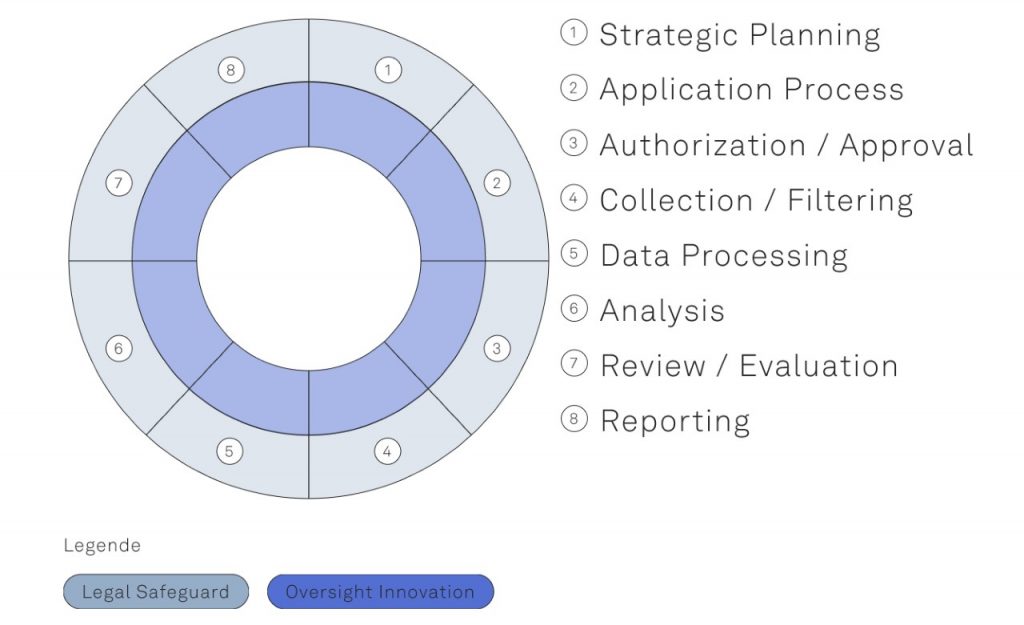Based on the more common intelligence cycle that has traditionally been used to explain the different stages required to produce actionable intelligence, we developed an intelligence oversight cycle and subdivided the governance aspects for the bulk surveillance of foreign communications into eight phases. From the initial strategic planning, the application processes, or the authorization/approval processes that are required prior to the execution of bulk powers, to the implementation of bulk powers in practice: In every phase we present exemplary high-water marks in legislation and oversight practices from different countries that point towards a good standard that democracies ought to meet.

On the different pages for each phase, this website briefly explains what happens in the specific phase, points out relevant aspects in legislation and oversight practices, and then lists the corresponding good-practice examples. The good practices can be filtered based on the country, the oversight category (e.g., restriction, transparency, etc.), and the dimension (legal safeguard/oversight practice). An exclamation mark indicates that a good practice has been “borrowed” from targeted surveillance governance but has been deemed relevant for SIGINT as well (more information on this can be found on our Methodology page). It also offers a “Nerd Corner” with relevant literature and additional information for readers who want to dig deeper into specific aspects of intelligence governance.